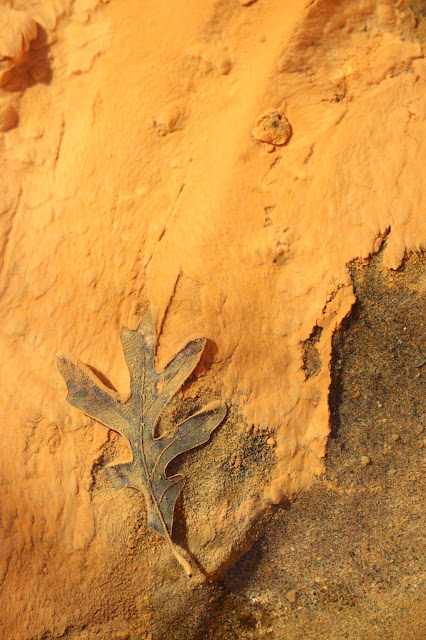What is It???
What is it???
You have a fossil, and someone told you it was a crazy animal called a ______. What is it? Here are a few of the generic names you hear for prehistoric (and modern) animals that you may be wondering about.
Brachiopod * Bryozoan * Cephalopod * Crinoid
What is a Brachiopod?
Although they generally look
like clams, brachiopods are not mollusks. Brachiopoda is a phylum (remember:
Kingdom-Phylum-Class-Order-Family-Genus-Species) of shellfish that float in the
water, tethered to the sea floor by means of a long, muscular pedicle. They
feed by way of a pair of arms that extend from the interior of the shell. The
valves appear symmetrical when viewed individually, but pairs of valves are not
the same size the way bivalves (in the mollusk phylum) are. Although hard to
find in the northern hemisphere, brachiopods are alive and plentiful today in
the deep, cool waters of the southern hemisphere.
The brachiopods shown here are from the Middle Devonian Period, Moscow Formation, Avoca, NY.
The brachiopods shown here are from the Middle Devonian Period, Moscow Formation, Avoca, NY.
What is a Bryozoan?
Bryozoa, also called moss
animals, resemble corals, but are in fact more remotely related to corals than
are jellyfish. They come in all different shapes and sizes. Some have calcified
structures beneath soft bodies. Some have hard gelatin structures, and some
have very soft structures. While there are over 4,000 living species scattered
around the tropical waters of the world, there are over 15,000 known in the
fossil record, extending back 500 million years. Because the soft-bodied
species do not preserve, and the hard gelatin structures were similarly hard to
preserve, there had to be many more that we will just never uncover.
Bryozoa, also called moss
animals, resemble corals, but are in fact more remotely related to corals than
are jellyfish. They come in all different shapes and sizes. Some have calcified
structures beneath soft bodies. Some have hard gelatin structures, and some
have very soft structures. While there are over 4,000 living species scattered
around the tropical waters of the world, there are over 15,000 known in the
fossil record, extending back 500 million years. Because the soft-bodied
species do not preserve, and the hard gelatin structures were similarly hard to
preserve, there had to be many more that we will just never uncover.
Fossil Bryozoa through the Ages
top left: Upper Devonian bryozoan from Beltzville Dam, PA; Top right: Miocene bryozoan from St. Leonard, MD;
bottom left: Paleozoic bryozoan from the Delaware Bay; Bottom right: Upper Devonian bryozoan from Beltzville Dam, PA
|
What is a Crinoid?
Crinoids look like frilly underwater flowers.
They belong to the Phylum Echinodermata, which also includes star fish, sand
dollars and sea urchins. They include sea lilies, which anchor themselves to
something on the sea floor, and feather stars, which are free moving. They
first appeared about 450 million years ago and still live in the ocean today.
Their bodies are supported by calcium-based columns that make up the hold fast
(the "root"), stem, calyx and arms. They
are usually found in the fossil record as individual, disk-like segments with
sunburst or star patterns at the center, articulated sections of stems and
arms, and less often as a whole calyx or holdfast. Some crinoids had stems with
ridged running their length which, in cross-section, look like five-point stars.
Some preserve as ribbed, hollow tubes. The fossilized sections, when found
hollow, were used as beads by both in North America and Europe. Here's a video
from Monterey Bay Aquarium: https://www.bing.com/videos/search…
Views of crinoid stems.
Above: The yellow circle at left is a cross-section of a stem and the brown coil is the impression of a flexible stem on its side. Upper Devonain, Mahantango Formation, Beltzville Dam, PA
Below: a crinoid holdfast (left) next to a snail, Middle Devonian, Skaneatles Formation, Hubbardsville, NY
What is a Cephalopod?
Cephalopods
are a type of mollusk. The name is Greek for "head-foot" and comes
from the fact that they all have at least 8 tentacles coming directly from the
head. Like snails, they're shellfish that may or may not have a hard shell.
Modern cephalopods include nautiluses, octopi and squid. Prehistoric
cephalopods were common in ancient seas and were a staple at the base of the
food chain. Some are believed to have schooled by the tens of thousands. Some
had hard shells (called phragmocones) on the outside, either coiled (like a
modern nautilus) or straight. Others had a hard, internal point called a guard
or rostrum, and an internal phragmocone.
|












Comments
Post a Comment